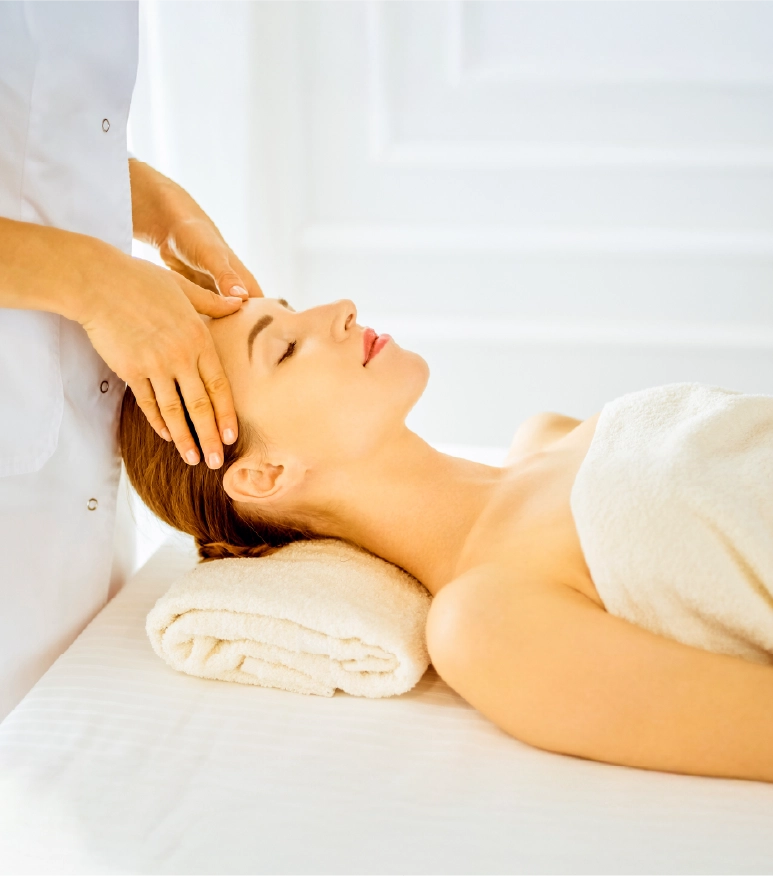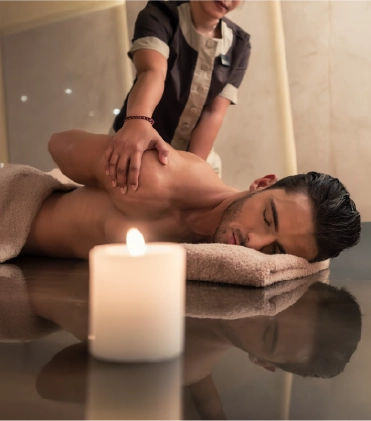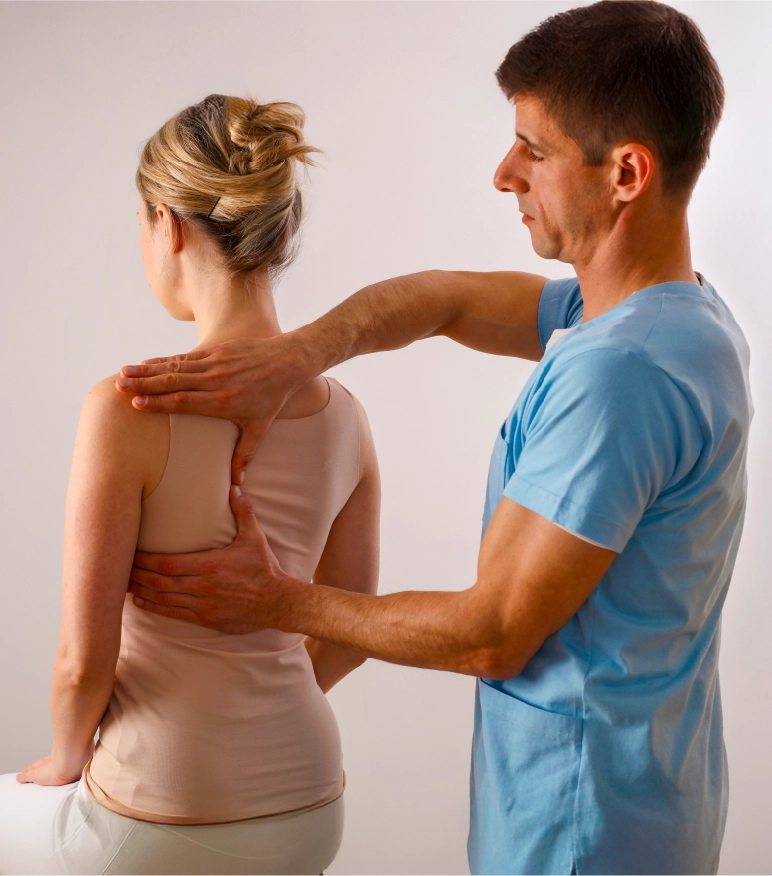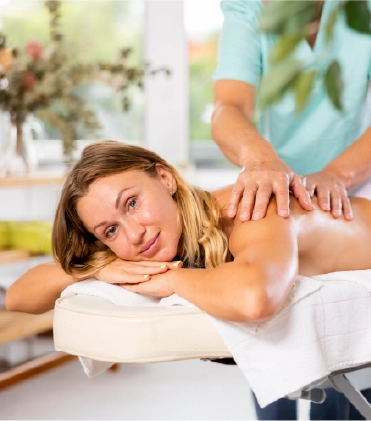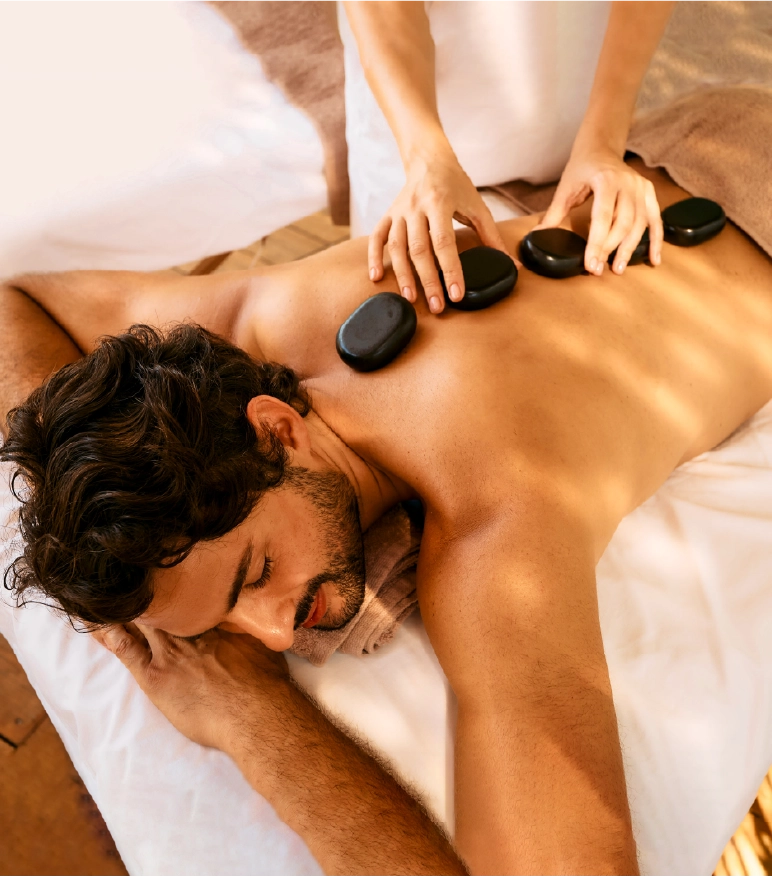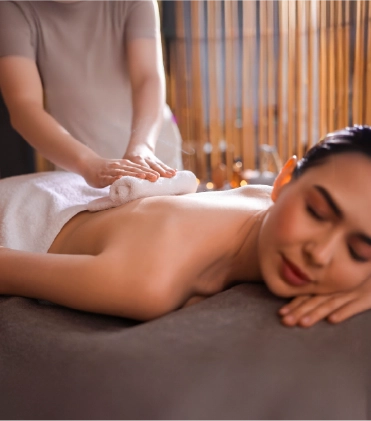What is the Treatment?
Thai massage is a traditional therapy in which a combination of techniques is used such as acupressure, stretching, and pulling to provide relaxation, ease tension, and increase circulation. It is also used to improve the flow of energy in the body. Thai massage is usually performed on a mat on the floor, and the recipient remains fully clothed throughout the session. The therapist uses their hands, elbows, knees, and feet to apply pressure on the body and also performs some stretching techniques to relax the muscles.
Philosophy/Origin
Thai massage comes from traditional Thai medicine in Thailand over 2,500 years ago. It is based on the concept of energy lines, or "Sen," which flow throughout the body. The therapy of Thai massage works to unblock the flow of energy. It is practiced to promote both physical and mental well-being.
Physical Benefits
Mental/Emotional Benefits
Long-Term Wellness
Regular sessions of Thai massage can improve posture and alignment and help in reducing long-term joint pain. It supports better sleep patterns and reduces insomnia by promoting relaxation. Thai massage also helps to balance the natural energy system of the body which prevents future physical or emotional blockages.
Ideal Audience
Thai massage is suitable for people of all ages and fitness levels who want to improve flexibility, relieve tension, or balance their energy. It is especially beneficial for individuals who enjoy active treatments and prefer holistic care as compared to traditional medicine.
Specific Conditions
Some of the conditions where a Thai massage can be used are as follows
The Thai massage involves the following techniques
Consultation
The therapist assesses the physical condition of each individual before therapy and discusses any areas of discomfort or tension. The therapist usually asks about medical conditions, injuries, or areas of concern to plan a treatment accordingly.
Preparation
The therapist discusses the techniques used in the Thai massage and allows the individual to fully relax so that each technique can be performed with great management. No oils or lotions are used in this treatment.
Pressure Application
The therapist starts by applying firm pressure to energy lines by using their hands, elbows, and feet. This technique helps improve blood flow, release tension, and promote overall relaxation. The therapist applies pressure to specific points which can help to manage muscle stiffness.
Stretching
The therapist performs various stretches in yoga-like positions and performs movements in joints. This technique involves passive stretching, where the therapist guides the body into positions to help improve flexibility and release tension.
Rhythmic Movements
Throughout the session, the therapist uses rhythmic movements in a manner to relax muscles and enhance energy flow. This rhythmic movement not only contributes to the relaxation of the muscles but also helps in promoting a sense of calm.
Completion
After the session, an individual may feel deeply relaxed, more flexible, and free of tension. The therapist may suggest instructions to maintain the benefits of the massage.
What to Expect
Thai massage is an interactive experience where the therapist stretches and moves the body while applying pressure to various points in the body. Many people feel a combination of firm pressure, deep stretches, and rhythmic movements. The experience is relaxing and provides more energy. Some people may describe it as an experience of yoga.
Immediate Effects
A deep sense of relaxation and calm, both physically and mentally
Increased flexibility and range of motion, especially in the joints
Relief from muscle tension, soreness, and stiffness
Enhanced mental clarity and focus due to the balanced energy flow
Long-Term Effects
Thai massage provides an improvement in overall flexibility and posture. It also reduces long-term muscle tension and lowers the risk of injury. Thai massage can help in managing stress levels. A balance in energy flow also promotes long-term physical and mental health.
Before the Treatment
It is recommended to wear not-so-lose and not-so-tight clothing so that the movements are not restricted. Avoid heavy meals or alcohol before the session. It is necessary to discuss medical issues with a therapist before the Thai massage.
Aftercare
It is advised to stay hydrated after the treatment session as it can help flush out toxins released during the massage. Rest and avoid heavy activities after the session to allow the body to fully relax. Stretch regularly to maintain the flexibility gained after the Thai massage.
Thai massage is widely available in spas, wellness centers, and specialized Thai massage clinics and Wellencia can help in connecting with the services to people all over the world. For a more optimum experience, it is important to consult with a certified practitioner of Thai massage.




